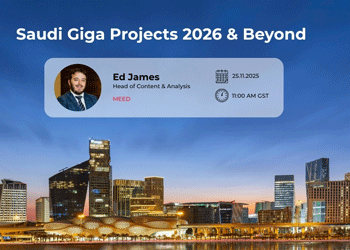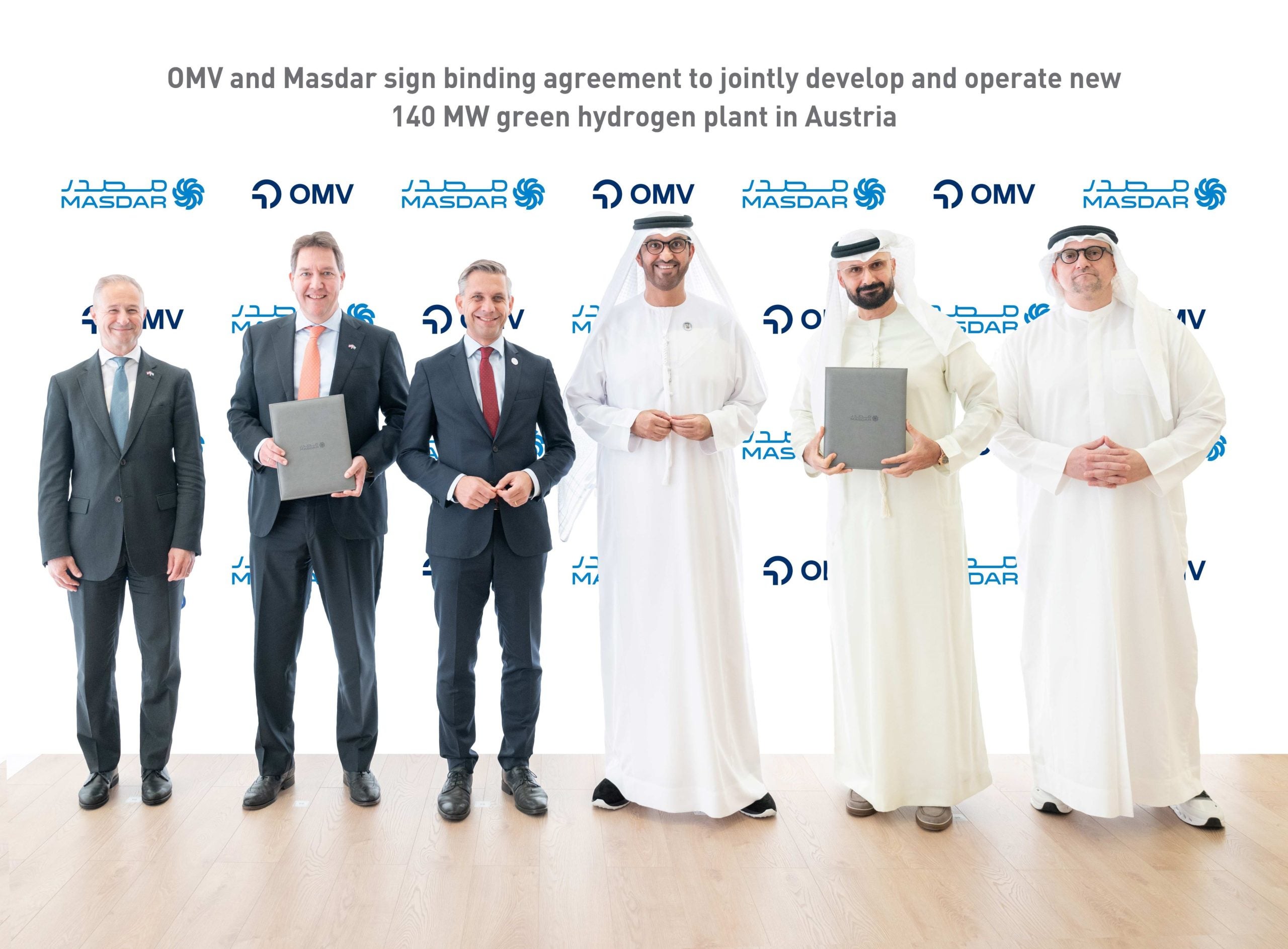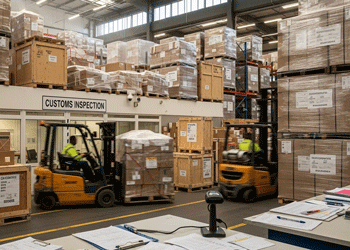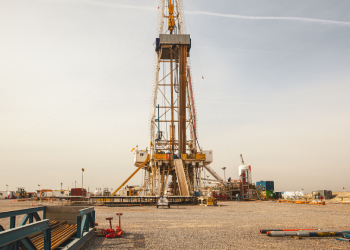Bahrain completes Sitra IWPP prequalification
24 March 2025

Bahrain’s Electricity & Water Authority (EWA) is understood to have concluded the prequalification process for bidders that may bid for a contract to develop and operate the state’s fourth independent water and power project (IWPP).
The Sitra IWPP is a combined-cycle gas turbine (CCGT) plant that is expected to have a production capacity of about 1,200MW of electricity. The project’s seawater reverse osmosis (SWRO) desalination facility will have a production capacity of 30 million imperial gallons a day (MIGD) of potable water.
EWA received the statements of qualifications (SOQs) from interested firms in December 2024.
The nine companies that submitted SOQs were:
- Al-Jomaih Energy & Water Company (Saudi Arabia)
- Gulf Investment Corporation (Kuwait)
- China Machinery Engineering Corporation (China)
- Korea Electric Power Corporation (Kepco, South Korea)
- Acwa Power (Saudi Arabia)
- Jera (Japan)
- Abu Dhabi National Energy Company (Taqa, UAE)
- Alghanim International General Trading & Contracting Company (foreign branch, Kuwait)
- Sumitomo Corporation (Japan)
While the prequalification process is understood to have been completed, EWA has yet to disclose the list of firms that can participate in the bidding stage.
The integrated plant will replace the previously planned Al-Dur 3 IWPP.
It will be developed on a brownfield site and strategically located in Sitra “to ensure resource efficiency and service delivery”. It is expected to be fully operational by the second quarter of 2029.
MEED previously reported that the client intends to float the tender for the Sitra IWPP to prequalified utility developers by May 2025.
The state utility is procuring Bahrain’s first independent water project in Al-Hidd, along with the Sitra IWPP.
The Al-Hidd SWRO plant is expected to have a production capacity of about 60 MIGD of potable water.
The two build, own and operate (BOO) projects will be procured under a public-private partnership framework for 20-25 years.
Sixty representatives from utility developers and contracting firms attended a market-sounding event in Manama on 21 October for the two separate utility BOO projects.
EWA’s transaction advisory team for both schemes comprises KPMG Fakhro as the financial consultant, WSP Parsons Brinckerhoff as the technical consultant and Trowers & Hamlins as the legal consultant.
Bahrain’s first three IWPPs are Al-Dur 1, Al-Hidd and Al-Dur 2.
MEED understands that EWA’s Sitra IWPP will likely be Bahrain’s last CCGT plant project. Solar power is expected to account for all future electricity generation capacity.
Bahrain aims to reach net-zero carbon emissions by 2060.
 READ THE MARCH MEED BUSINESS REVIEW – click here to view PDF
READ THE MARCH MEED BUSINESS REVIEW – click here to view PDF
Chinese contractors win record market share; Cairo grapples with political and fiscal challenges; Stronger upstream project spending beckons in 2025
Distributed to senior decision-makers in the region and around the world, the March 2025 edition of MEED Business Review includes:
|
> AGENDA 1: Chinese firms dominate region’s projects market
> AGENDA 2: China construction at pivotal juncture
> UPSTREAM 1: Offshore oil and gas sees steady capex
> UPSTREAM 2: Saudi Arabia to retain upstream dominance
> DIRIYAH: Diriyah CEO sets the record straight
> SAUDI POWER: Saudi power projects hit record high
> AUTOMOTIVE: Saudi Arabia gears up to lead Gulf’s automotive sector
> EGYPT: Egypt battles structural issues
> GULF PROJECTS INDEX: Gulf hits six-month growth streak
> CONTRACT AWARDS: High-value deals signed in power and industrial sectors
> ECONOMIC DATA: Data drives regional projects
|
Exclusive from Meed
-
 WEBINAR: Saudi gigaprojects 2026 and beyond
WEBINAR: Saudi gigaprojects 2026 and beyond7 November 2025
-
 Bahrain advances utility reform
Bahrain advances utility reform7 November 2025
-
 Masdar and OMV sign 140MW green hydrogen plant deal
Masdar and OMV sign 140MW green hydrogen plant deal7 November 2025
-
 Firms submit Saudi customs warehouses PPP bids
Firms submit Saudi customs warehouses PPP bids7 November 2025
-
 KBR selected for Iraq gas project
KBR selected for Iraq gas project7 November 2025
All of this is only 1% of what MEED.com has to offer
Subscribe now and unlock all the 153,671 articles on MEED.com
- All the latest news, data, and market intelligence across MENA at your fingerprints
- First-hand updates and inside information on projects, clients and competitors that matter to you
- 20 years' archive of information, data, and news for you to access at your convenience
- Strategize to succeed and minimise risks with timely analysis of current and future market trends

Related Articles
-
 WEBINAR: Saudi gigaprojects 2026 and beyond
WEBINAR: Saudi gigaprojects 2026 and beyond7 November 2025
Webinar: Saudi Gigaprojects 2026 & Beyond
Tuesday 25 November 2025 | 11:00 GST | Register now
Agenda:
- Latest update to November 2025 on the gigaprojects programme and the Saudi projects market in general, with full data analysis for 2025 year-to-date
- Latest assessment on the reprioritisation of the programme and views on which of the gigaprojects are being prioritised
- Summary of key recent project developments and announcements
- Analysis of key contracts awarded this year to date
- Highlights of key contracts to be tendered and awarded over the next six months
- Key drivers and challenges going forward plus MEED’s outlook for the future short and long-term prospects of the gigaprojects programme
- In-depth look at the recently announced King Salman Gate gigaproject and other planned, but unannounced PIF developments
- Life beyond the gigaprojects – what other key project programmes are being implemented in the kingdom
- Q&A session
Hosted by: Edward James, head of content and analysis at MEED
 A well-known and respected thought leader in Mena affairs, Edward James has been with MEED for more than 19 years, working as a researcher, consultant and content director. Today he heads up all content and research produced by the MEED group. His specific areas of expertise are construction, hydrocarbons, power and water, and the petrochemicals market. He is considered one of the world’s foremost experts on the Mena projects market. He is a regular guest commentator on Middle East issues for news channels such as the BBC, CNN and ABC News and is a regular speaker at events in the region. https://image.digitalinsightresearch.in/uploads/NewsArticle/15045990/main.gif
A well-known and respected thought leader in Mena affairs, Edward James has been with MEED for more than 19 years, working as a researcher, consultant and content director. Today he heads up all content and research produced by the MEED group. His specific areas of expertise are construction, hydrocarbons, power and water, and the petrochemicals market. He is considered one of the world’s foremost experts on the Mena projects market. He is a regular guest commentator on Middle East issues for news channels such as the BBC, CNN and ABC News and is a regular speaker at events in the region. https://image.digitalinsightresearch.in/uploads/NewsArticle/15045990/main.gif -
 Bahrain advances utility reform
Bahrain advances utility reform7 November 2025

In September, Bahrain’s government referred a draft law to parliament to restructure the kingdom’s electricity and water sector.
This proposes dissolving the Electricity & Water Authority (Ewa) and transferring its assets and functions to a newly established National Electricity & Water Company, which will operate under the oversight of the Electricity & Water Regulatory Authority.
The reform marks the first full structural overhaul of Bahrain’s utilities sector in nearly two decades and signals a shift towards a more commercially driven model.
Regulatory and operational roles would be separated for the first time, allowing private sector participation under transparent licensing and tariff systems, aligning Bahrain with utility reforms seen in Saudi Arabia, Oman and the UAE.
It comes amid a relatively subdued year for new contracts that broadly falls in line with 2024’s performance. Most significantly, Bahrain continues to move towards its two upcoming utility public-private partnership (PPP) schemes, the Sitra independent water and power project (IWPP) and the Al-Hidd independent water project (IWP).
In August, a developer tender was issued for the main works package for the Sitra IWPP. This followed the prequalification of seven companies and consortiums, reflecting a wide range of international interest.
The planned Sitra IWPP replaces the previously planned Al-Dur 3 and will be the first IWPP project to be awarded since the 1,500MW Al-Dur 2 IWPP was completed in 2021.
The combined-cycle gas turbine (CCGT) plant is expected to have a production capacity of about 1,200MW of electricity, while the project’s seawater reverse osmosis (SWRO) desalination unit will have a production capacity of 30 million imperial gallons a day (MIGD) of potable water. The main contract is expected to be awarded by the end of the year, with commercial operations set for 2029.
A developer tender was also recently launched for Bahrain’s first independent, standalone SWRO plant following a prequalification process that shortlisted nine companies and consortiums.
The Al-Hidd IWP is expected to have a production capacity of about 60MIGD of potable water and be completed in 2028. It is likely to be the last IWPP for Bahrain, which aims to reach net-zero carbon emissions by 2060.
The imminent launch of the two projects boosts Bahrain’s projects pipeline, which has experienced muted growth in the aftermath of the Covid-19 pandemic, carried by relatively small-scale projects.
Solar PV projects
The creation of the National Electricity & Water Company as Bahrain’s new operational entity could also support the rollout of future renewable energy schemes.
As a corporatised offtaker, the company will be able to enter long-term power purchase agreements (PPAs) with private developers under a more bankable framework. Currently, these are negotiated by Ewa on a case-by-case basis.
The government recently signed a 123MWp solar PPA with the UAE’s Yellow Door Energy, highlighting growing private sector interest in the market. The project includes the world’s largest single-site rooftop solar installation and will be developed at Foulath Holding’s industrial complex in Salman Industrial City.
Bahrain has already set a target to source 20% of its energy from renewables by 2035 and reach net-zero emissions by 2060.
In October, Ewa also issued a tender for the development of the Bilaj Al-Jazayer solar independent power project (IPP). The planned 100MW project will be developed on a build-own-operate basis with a 25-year contract term.
In parallel, Bahrain is broadening its long-term energy strategy beyond solar. In July, the kingdom signed a cooperation agreement with the US on the peaceful use of nuclear energy, aimed at advancing research and potential deployment of small modular reactor (SMR) technology.
For countries like Bahrain, which has limited land availability and high energy demand growth, SMRs could offer a way to produce low-carbon, reliable baseload power without requiring vast areas of land for solar or wind farms.
Officials have indicated that SMRs, along with floating solar solutions, are being studied as part of a broader push to diversify energy sources and expand renewable generation capacity.
Water and waste
Bids for four Ewa-owned projects are currently being evaluated. This includes the construction of a new SWRO desalination plant on Hawar Island and rehabilitation works for the Ras Abu Jarjur water treatment plant in Askar. Contracts for both projects are expected to be awarded this year.
Bahrain’s Ministry of Works (MoW) is the other client for the island-state’s power and water infrastructure-related projects. It has awarded three smaller sewage-related contracts this year.
It is also preparing to tender the construction of a $130m sewage treatment plant in Khalifa City, which will be developed in two phases. Meanwhile, the construction of MoW’s sewerage scheme phase 2 network in Bahrain remains in the early design stage with no further updates.
As Bahrain moves ahead with these projects, the new electricity and water law could define how future investments are structured, regulated and financed. This could reshape the kingdom’s utilities landscape for decades to come.
MEED's December special report on Bahrain also includes:
> ECONOMY: Bahrain’s cautious economic evolution
> BANKING: Mergers loom over Bahrain’s banking system
> OIL & GAS: Bahrain remains in pursuit of hydrocarbon resources
> CONSTRUCTION: Bahrain construction faces major slowdown
> TRANSPORT: Bahrain signs game-changer aviation deal with Air Asiahttps://image.digitalinsightresearch.in/uploads/NewsArticle/15044915/main.gif -
 Masdar and OMV sign 140MW green hydrogen plant deal
Masdar and OMV sign 140MW green hydrogen plant deal7 November 2025
Register for MEED’s 14-day trial access
Abu Dhabi Future Energy Company (Masdar) has signed a binding agreement with Austrian energy company OMV to develop and operate a major green hydrogen production plant in Austria.
The 140MW green hydrogen electrolyser plant will be Europe's fifth-largest hydrogen plant, according to Masdar chairman, Sultan Ahmed Al-Jaber.
It will be built in Bruck an der Leitha, about 40 kilometres southeast of Vienna.
The facility will be developed under a newly established joint venture, in which Masdar owns 49% and OMV holds the majority 51% stake.
The agreement was signed at the Abu Dhabi International Petroleum Exhibition and Conference (Adipec), in the presence of Al-Jaber; Austria’s Federal Minister of Economy, Energy and Tourism, Wolfgang Hattmannsdorfer; OMV CEO Alfred Stern; and Masdar CEO Mohamed Jameel Al-Ramahi.
It is expected that the project will reach financial close in early 2026, subject to final documentation, shareholder consent and regulatory approvals.
Construction began in September, with operations scheduled to start in 2027.
OMV, which already operates a 10MW electrolyser in Schwechat, will procure renewable electricity for hydrogen production and retain ownership of the output.
Several large-scale hydrogen facilities across Europe are currently under construction.
In 2024, Germany's Siemens Energy signed a deal with German utility EWE to build a 280MW green hydrogen electrolysis plant. This is expected to begin operations in 2027.
Masdar and OMV previously signed a letter of intent to cooperate on green hydrogen, synthetic sustainable aviation fuels (e-SAF) and synthetic chemicals in both the UAE and central and northern Europe.
 READ THE NOVEMBER 2025 MEED BUSINESS REVIEW – click here to view PDF
READ THE NOVEMBER 2025 MEED BUSINESS REVIEW – click here to view PDFMena players up the ante in global LNG production race; Investment takes UAE non-oil economy from strength to strength; Project finance activity draws international lenders back to market
Distributed to senior decision-makers in the region and around the world, the November 2025 edition of MEED Business Review includes:
> AGENDA 1: Gulf LNG sector enters a new prolific phase> INDUSTRY REPORT 1: Region sees evolving project finance demand> INDUSTRY REPORT 2: Iraq leads non-GCC project finance activity> GREEN STEEL: Abu Dhabi takes the lead in green steel transition> DIGITISATION: Riyadh-based organisation drives digital growth> UAE MARKET FOCUS: Investment shapes UAE growth storyTo see previous issues of MEED Business Review, please click herehttps://image.digitalinsightresearch.in/uploads/NewsArticle/15040802/main0933.jpg -
 Firms submit Saudi customs warehouses PPP bids
Firms submit Saudi customs warehouses PPP bids7 November 2025

Three Saudi-based firms submitted bids on 29 September for a contract to build new customs warehouses in Saudi Arabia.
The project is being tendered as a public-private partnership (PPP) on a design, build, finance, operate, maintain and transfer basis, with a contract duration of 15 years, including the construction period.
The bidders include:
- Al-Drees Petroleum & Transport Services Company
- Lamar Holding
- Mada International Holding
The contract scope covers the development of 13 warehouses – including the design and construction of 12 new facilities and the renovation of one – across 13 different points of entry in the kingdom, along with the maintenance of all sites.
The contract also includes the supply of equipment, as well as logistical support and cleaning services, for all new and existing warehouses at 38 points of entry across the kingdom.
In January, the Zakat, Tax and Customs Authority (Zatca), through the National Centre for Privatisation and PPP (NCP), prequalified five companies to bid, MEED reported.
The client issued the expressions of interest (EOI) and request for qualifications (RFQ) notices for the project in October last year.
PPP plans
In April 2023, Saudi Arabia announced a privatisation and public-private partnership (P&PPP) pipeline comprising 200 projects across 16 sectors.
The P&PPP pipeline aims to attract both local and international investors and ensure their readiness to participate in the schemes tendered to the market.
The initiative supports the kingdom’s efforts to enhance the attractiveness of its economy and increase the private sector’s contribution to GDP.
 READ THE NOVEMBER 2025 MEED BUSINESS REVIEW – click here to view PDF
READ THE NOVEMBER 2025 MEED BUSINESS REVIEW – click here to view PDFMena players up the ante in global LNG production race; Investment takes UAE non-oil economy from strength to strength; Project finance activity draws international lenders back to market
Distributed to senior decision-makers in the region and around the world, the November 2025 edition of MEED Business Review includes:
> AGENDA 1: Gulf LNG sector enters a new prolific phase> INDUSTRY REPORT 1: Region sees evolving project finance demand> INDUSTRY REPORT 2: Iraq leads non-GCC project finance activity> GREEN STEEL: Abu Dhabi takes the lead in green steel transition> DIGITISATION: Riyadh-based organisation drives digital growth> UAE MARKET FOCUS: Investment shapes UAE growth storyTo see previous issues of MEED Business Review, please click herehttps://image.digitalinsightresearch.in/uploads/NewsArticle/15040496/main.gif -
 KBR selected for Iraq gas project
KBR selected for Iraq gas project7 November 2025
Register for MEED’s 14-day trial access
US-based KBR has been selected by Turkiye’s Enka to provide detailed design services for its part of the broader $27bn Gas Growth Integrated Project (GGIP) masterplan.
KBR was selected to provide the detailed design services after successfully completing the front-end engineering and design (feed) work for Enka’s central processing facility (CPF) package, according to a statement issued by the company.
The wider GGIP project is being developed by France’s TotalEnergies along with its partners Basra Oil Company (BOC) and Qatar Energy.
In September, Enka signed a contract to develop a CPF at Iraq’s Ratawi oil field as part of the second phase of the field’s development.
Enka did not give a value for the contract, but it is believed to be worth more than $1bn.
The contract covers engineering, procurement, supply, construction and commissioning (EPSCC) of the CPF for the project known as ‘Associated Gas Upstream Project Phase 2 (AGUP2)’.
The aim of the AGUP2 project, due to start in 2028, is to process oil and associated gas from the Ratawi oil field to increase production capacity to 210,000 barrels a day of oil and 154 million standard cubic feet a day of gas.
GGIP masterplan
The GGIP programme is being led by TotalEnergies, which is the operator and holds a 45% stake.
Basra Oil Company and QatarEnergy hold 30% and 25% stakes, respectively. The consortium formalised the investment agreement with the Iraqi government in September 2021.
The four projects that comprise the GGIP are:
- The Common Seawater Supply Project (CSSP)
- The Ratawi gas processing complex
- A 1GW solar power project for Iraq’s electricity ministry
- A field development project at Ratawi, known as the Associated Gas Upstream Project (AGUP)
The CSSP is designed to support oil production in Iraq’s southern oil and gas fields – mainly Zubair, Rumaila, Majnoon, West Qurna and Ratawi – by delivering treated seawater for injection, a method used to boost crude recovery rates and improve long-term reservoir performance.
China Petroleum Engineering & Construction Corporation (CPECC) won a $1.61bn contract in May to execute EPC works to build the gas processing complex at the Ratawi field development.
CPECC’s project team based in its office in Dubai is performing detailed engineering works on the project.
In August last year, TotalEnergies awarded China Energy Engineering International Group the EPC contract for the 1GW solar project at the Ratawi field. A month later, QatarEnergy signed an agreement with TotalEnergies to acquire a 50% interest in the project.
The 1GW Ratawi solar scheme will be developed in phases that will come online between 2025 and 2027. It will have the capacity to provide electricity to about 350,000 homes in Iraq’s Basra region.
The project, consisting of 2 million bifacial solar panels mounted on single-axis trackers, will include the design, procurement, construction and commissioning of the photovoltaic power station site and 132kV booster station.
Separately, in June, TotalEnergies awarded CPPE an EPC contract worth $294m to build a pipeline as part of a package known as the Ratawi Gas Midstream Pipeline.
Also, TotalEnergies awarded UK-based consultant Wood Group a pair of engineering framework agreements in April, worth a combined $11m, under the GGIP scheme.
The agreements have a three-year term under which Wood will support TotalEnergies in advancing the AGUP.
One of the aims of the AGUP is to debottleneck and upgrade existing facilities to increase production capacity to 120,000 b/d of oil on completion of the first phase, according to a statement by Wood.
 READ THE NOVEMBER 2025 MEED BUSINESS REVIEW – click here to view PDF
READ THE NOVEMBER 2025 MEED BUSINESS REVIEW – click here to view PDFMena players up the ante in global LNG production race; Investment takes UAE non-oil economy from strength to strength; Project finance activity draws international lenders back to market
Distributed to senior decision-makers in the region and around the world, the November 2025 edition of MEED Business Review includes:
> AGENDA 1: Gulf LNG sector enters a new prolific phase> INDUSTRY REPORT 1: Region sees evolving project finance demand> INDUSTRY REPORT 2: Iraq leads non-GCC project finance activity> GREEN STEEL: Abu Dhabi takes the lead in green steel transition> DIGITISATION: Riyadh-based organisation drives digital growth> UAE MARKET FOCUS: Investment shapes UAE growth storyTo see previous issues of MEED Business Review, please click herehttps://image.digitalinsightresearch.in/uploads/NewsArticle/15040492/main.png

